Running to save butterflies: Film to tell the story of The Monarch Ultra
In 2019, a running relay covered 4,300km and three countries to raise awareness of the under threat Monarch butterfly - a new documentary tells the story of that run
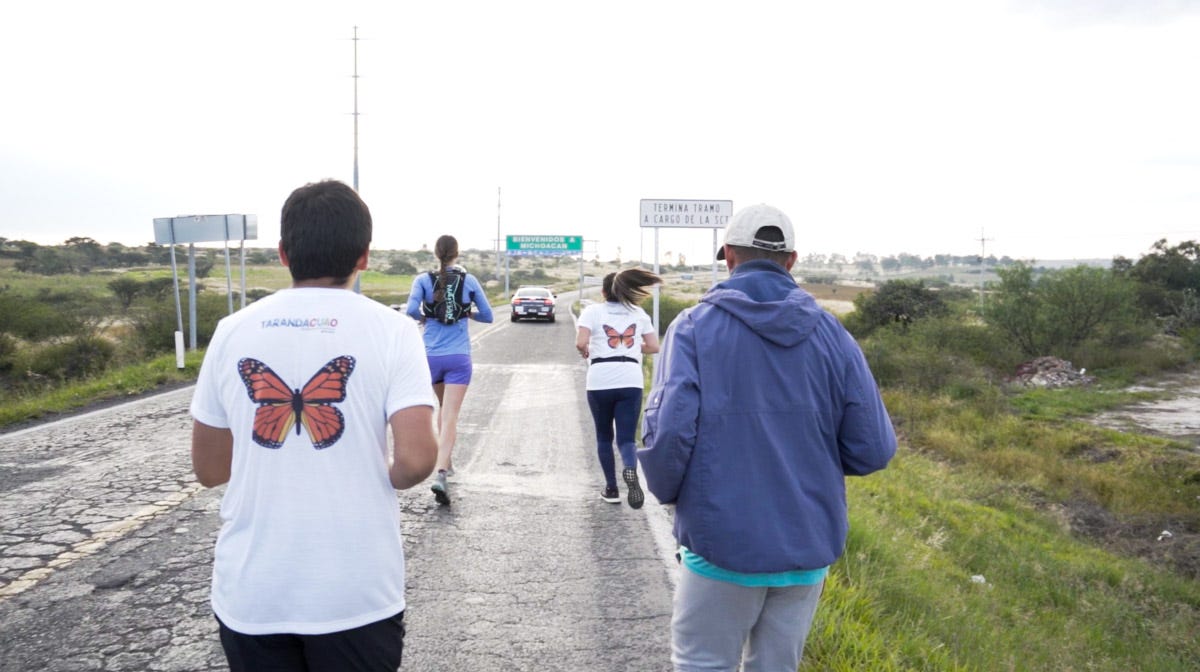
A new film charting an epic multi-day ultra marathon relay that crossed three countries to champion the cause of the endangered Monarch butterfly has been released.
The Monarch Ultra documentary tells the story of the 2019 run of the same name, a brutal 47-day slog across Canada, America and Mexico that proved almost as tough to organise as it did to complete.
Covering 4,300km (2,671 miles) and following the route taken by migrating Monarch butterflies, the event saw runners complete legs of 50 to 100kms, often taking on temperatures of more than 30°C (86°F) and passing through areas where they didn’t see another person for hours.
The endeavour was all captured on camera by filmmaker Rodney Fuentes, who is also one of the run’s organisers. The first screening of his film will take place in Peterborough, Ontario - where the run started - on October 23 this year, with more dates set to follow.
What is The Monarch Ultra?

The Monarch Ultra was created in 2019 to honour the Monarch butterfly and raise awareness of its plight.
A seven-week relay from Ontario in Canada to the Sierra Madre Mountains in Mexico, it saw a series of runners - some of who took on several legs - combine to take the same journey undertaken by the butterflies when they escape the cold of North America.
It was organised as a response to the tragic demise of the Monarch species, whose numbers have declined by more than 80% since 1997-98.
“For us, it was a big deal because Monarchs are one of the most common butterfly species in Canada, and I think in the US as well,” Rodney said.
“The fact that we can hardly see them now raised the alarm. We were asking not only what was going on with the Monarchs, but also with insect pollinators in general.
“We knew on paper what was happening with the monarchs. We knew that there is habitat loss.
“In North America, the plant the caterpillar feeds on is called a milkweed. And there's less and less milkweed.
“Then we knew that also there's a problem with pesticide use and how pesticides are causing a lot of decline of not just Monarch butterflies, but many other insects and bees.
“We also knew that there's problem in the sanctuary in Mexico, where the Monarchs spend their winter, due to deforestation.
“But there's a difference between knowing all that on paper and actually seeing it. One of the things we wanted to do was run the same route of the Monarchs, so we'd be able to see what they see.
“If they're tired because they have to eat on the way, they need wild flowers to feed on nectars to get enough juice in order to continue going south. And where are those flowers?
“We started seeing what the Monarch butterfly encounters - some kind of signs of climate change, pesticides, everything that we know that is causing the species to decline.”
Rodney said the idea had been to put on a headline-grabbing event, something to rival the journey the Monarchs made in terms of its epic nature.
“We didn’t want to hold a tombola or a quiz and raise a few pounds,” he added. “Instead, we decided we were going to run across three countries.”
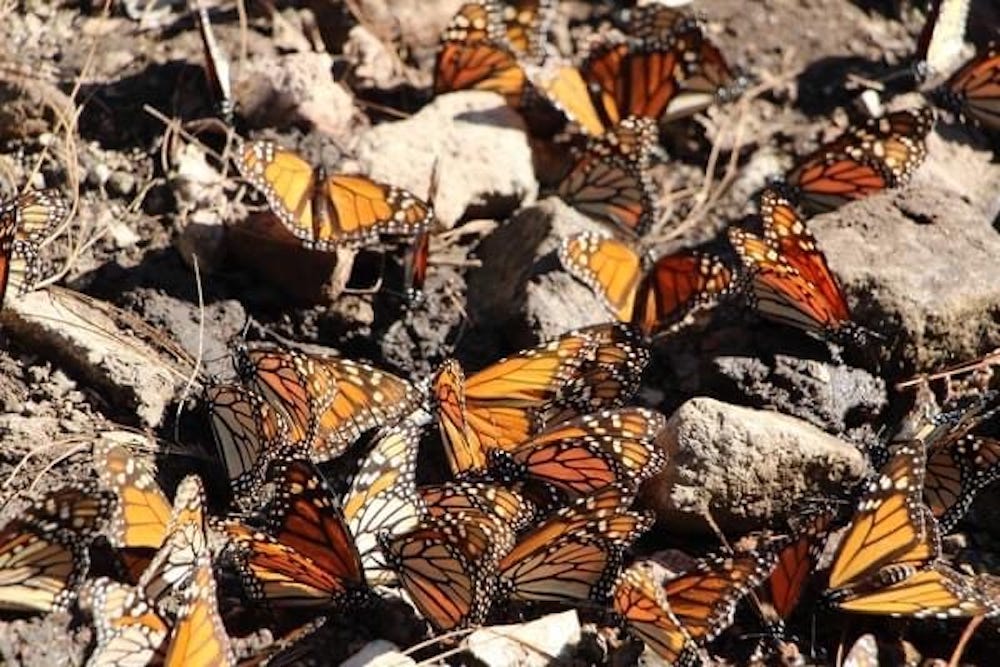
The run took place at the same time as the butterflies were migrating, with the aim being to arrive in Mexico alongside them.
With the Monarchs travelling 80kms per day, the relay had to be completed in a tight timeframe - a challenge to the runners taking part, many of whom had never run an ultra marathon before.
“That's why it's called The Monarch Ultra,” Rodney said. “The ultra has to be an official ultra marathon distance - so some ran 50km, some 80km, some 100km.”
Due to the huge distances involved, the event had to be conducted as a relay: “That was actually harder logistically than just having one person run the whole way.
“If it's just one person that requires an insane amount of fitness to be able to run a marathon every single day for many days. But it's just one person to co-ordinate.
“The problem arises when you have over 40 people to co-ordinate and they have to arrive sometime in the middle of nowhere, which happens to be where the last person stopped running and went home.
“The next person came along using their GPS to find us somewhere on the road in Texas or Arkansas or Ontario, and then they started to run.”
How The Monarch Ultra Film combines the stories of runners and butterflies:
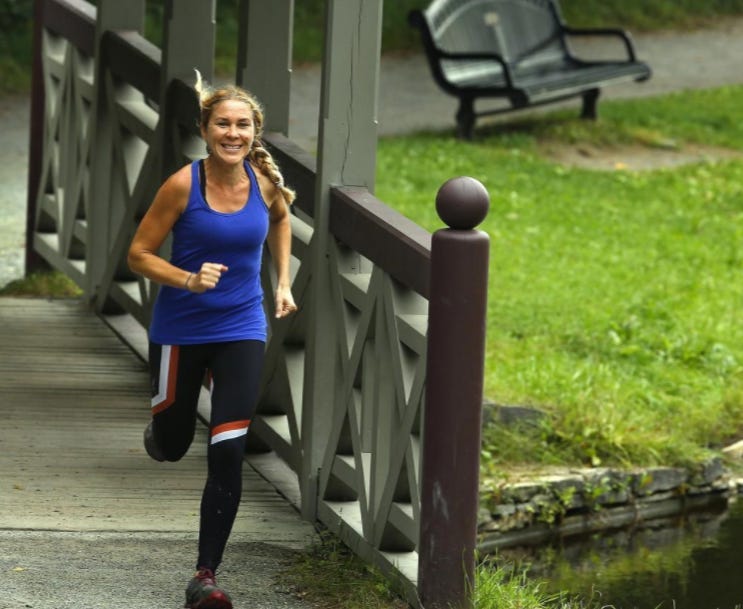
The “engine” behind the whole idea was Monarch Ultra Project Director and co-founder, Carlotta James.
“Carlotta wants to be where there's a trail,” Rodney said, “where there's trees, wildlife, and birds singing.
“One day in 2016 she was running and she saw a Monarch butterfly, and somehow the idea just popped to her head.
“She goes on very long runs and gets these ideas. And then she sends emails and texts. She came over and told me the idea. I was like, ‘OK, this is nuts’, but I like nuts.”
With a varied background as a documentary maker and environmentalist, Rodney was the perfect man to take on the task.
As a child growing up, he had actually wanted to be a writer rather than a filmmaker but - in his own words - was “really bad at it”.
In his early 20s he spent time as a bird-watching tour guide, firstly in Venezuela and then through the Amazon Rainforest and into the Andes.
He said: “I spent time in so many different habitats area from sea level to the mountains.
“You learn to be not just a bird watcher, you become a naturalist. You learn a lot about plants and animals, but also about the communities that live around those forests and natural areas.”
During that time Rodney had a friend who would take “some great photos” of all the incredible things they were seeing.
It planted a seed in his hand and when he returned to Canada in 2002, he took up photography before adding film to his repertoire about eight years ago.
His work included producing a video about a charity which put on a concert to raise money for a homeless shelter: “I’d never done anything like that in my life, but I fell in love with the entire process, from writing, to editing and filming.
“That's when I knew I wanted to do this. And at the same time, I’m fulfilling my childhood dream because making film is the same as writing. It's just a different style of writing that resonates better with my personality.”
When it came to producing the story of the Monarch Ultra, Rodney was keen to tell the stories of the runners and the butterflies in parallel.
“I wrote and rewrote things over and over again - 25 times at least - trying to craft the story,” he said.
“But I always knew that I wanted to tell the runners’ and the Monarch butterflies’ stories at the same time. We can connect with one and the other at the same time.
“That was the big puzzle. Once I was filming, it became monotonous - ‘here comes another runner’. In the mid-west of America it was hard as every single shot was exactly the same and nothing changed for hundreds of miles.
“But I took advantage of a few detours that we did and some interviews along the way that helped me to shape the story. I knew it would unfold once we started describing what the Monarch butterfly sees.
“When I combined those aspects, you could suddenly see variety. You have to have the running story, but also the environmental story to make it interesting.”
‘We’ve got it pretty easy in comparison wildlife’:
Rodney said it had been a tricky job to film the event, firstly because he was a member of the organising team but also as the run took place largely on highways to allow the fastest route to be followed.
“On those occasions, it was impossible to do an interview,” he said. “I brought a bike, and there's a couple of scenes you can tell that I'm on a bike because it's just too smooth and too fast.
“There's no way I can run that fast, and keep it nice and smooth without the camera shaking.”
Travelling by bike allowed Rodney to not only carry his camera kit, but to travel ahead of the runners so he could capture them arriving at certain points.
However, the busy nature of some of the highways made it hard for him to use the bike safely while videoing the runners.
“It would have been would have been fantastic if I could have used the bike a lot more often,” he said.
“But that was just part of it. We encountered a lot of challenges - to do with roads, to do with dehydration, with injuries. It had to do, sometimes, with not being able to find food.”
He added part of the challenge was trying to picture what would happen to a butterfly as it hit similar issues.
“More than likely that little butterfly will die, and that will be the end of their journey,” he told Running Tales.
“We have it a little bit easier because we have an RV, and we have vehicles and food with the support crew.
“That gives a little bit of perspective. We’ve got it pretty easy in comparison with how wildlife has it.
“We have all this technology in warm homes and restaurants, and communities to help us out.
“But wildlife, when things go wrong, usually they don't survive. When things go wrong on our side, we have plenty of help.”
The extra pressures created due to environment change and pesticides is increasing the chances of something going wrong for migrating butterflies.
Another key difference between the Monarchs and the runners copying their route is that the butterflies have no choice but to do the run.
If they were to stay in the cold of Canada, they would freeze to death. While the runners taking on the Monarch Ultra were determined to reach their goal, and had a strong why to back them up, their journey was not a matter of life and death for them.
Despite that, Rodney is full of praise for those who took part in the relay: “You could tell they were hurting, but they just kept going.
“If you train for your first Olympics and you've been training for four years, once you're on the race, you're going to finish no matter what.
“But the interesting thing was this was not the Olympics, yet people were doing it. That was the strong commitment that they had for the cause. It was very special.”
The runners faced harsh conditions, including temperatures of 35°C (95°F) while running on dark pavement. They also had to cope with not seeing a single other person for many miles.
“They could have dropped out at any time,” he said. “There would have been no judgement.
“It was incredibly tough and incredibly brave of them to carry on and keep churning out those distances, particularly when it wasn’t something that they’d regularly done.”
How local communities can help to change the world:
Rodney said it has been hard to measure the exact extent of the impact of the Monarch Ultra, but he added that publicity surrounding the event and the documentary has inspired communities in Ontario to build more gardens and put more milkweed in their yards.
The Mexican population along the Monarch’s migratory route are also “willing to do whatever they can to protect the butterflies”.
“But more importantly we are putting the Monarch butterflies on a map in a different way,” he said.
“When you watch the documentary, you realise a Monarch is more than just an insect, and what they mean for the people in Mexico.
“If we can help to protect Monarch butterflies, we're helping to protect wildflowers and their habitat. And that means we're helping to protect all types of wildlife.
“I see the Monarch butterfly more as a symbol, and the benefits of protecting it will spread out to nature in general.”
Rodney said he gets scores of emails and phone calls from people asking how they can help conserve the butterflies.
His hope is that with each new person who learns the importance of Monarchs and how to protect them, a tidal wave of support will eventually build.
“If one community is doing well and can inspire another community, that expansion is like a spider web,” he said.
“People feel powerless when thinking about climate change as it is just too big. They don’t know how they can do anything to change it.
“And maybe you cannot do a whole lot about climate change on a large scale, but you can do a whole lot to change what's happening in your own neighbourhood, your community, your city, your town.
“That's one of the messages we have in our documentary. Everybody has a voice in their own community, and we have been seeing things - a movement.
“It might not be necessarily through The Monarch Ultra specifically, but there's definitely a movement of so many community members that I know of, not just here in Peterborough but all areas in Canada.”
Rodney said anyone who does want to help can do so through relatively simple acts like planting trees or flowers, replacing grass lawns with native plants that will attract insects and wildlife, or supporting local farmers who use sustainable methods.
“There's a cost for not using pesticide,” he said, “but as consumers we have a power to demand what kind of products we want.
“By buying from companies that are more sustainable than others, it actually does make a pretty big difference.
“We make those companies stronger. We make those farmers stronger, and they don't have to use as many pesticides or harm the environment as much.
“Every choice we make when we purchase things has an impact, and it's a pretty big impact collectively.”
The return of The Monarch Ultra?:
Although the 2019 Monarch Ultra was a huge success, the logistics of putting on such a complicated event every year has meant to date it is the only time the run has taken place in its original format.
Initially, the hope had been to hold it every two years, but the pressures of being away from family on the road for seven weeks caused Carlotta, Rodney and the organising team to have a rethink.
Over the years, the event has taken place in various forms eventually morphing into The Monarch Festival in 2023. The new format consists of a 10k race for adults and a one kilometre run for children, with vital funds raised for environmental causes.
For the last two years any money raised has gone to Nación Verde, a Mexican organisation which specialises in forest restoration.
The charity has planted more than 100 Oyamel fir trees, which are used by Monarch butterflies when they visit Mexico.
Meanwhile, it has also taking on the task of hosting its own run - independent of the Monarch Ultra, but boasting the same conservation aims.
“The route is beautiful,” Rodney said. “It started right at the base of the sanctuary and runs for 5km.
“The original plan was for 13km, meaning if you do four loops of that you make an ultra - 52km. But that became too complicated, so they only have a 5km route. If you want to run an ultra, which a couple of people did, then you do that route 10 times.
“And it is brutal. I didn't run as, unfortunately, I had just torn my MCL cross-country skiing. But my son did it, and it was the first time he has ever run 5km.
“Everyone said it was like running 10kms here as the course includes 200 meters of vertical elevation and is at high altitude.
“It was a magnificent event. There were a lot of people, and it was absolutely beautiful. It was a big deal for us because it was the first time that we know of that someone organised a run for the Monarch butterflies that is not us, and we inspired these people to do it.”
This year’s Monarch Festival will take place at Millennium Park in Peterborough, Ontario on September 20, 2025 with proceeds going to Camp Kawartha, a not-for-profit organisation which offers summer camps and education in some of Canada’s most sustainable facilities.
The funds will go towards building pollinator gardens at various schools in Peterborough and nearby Curve Lake.
But what about the prospect of the original multi-country format returning? Rodney isn’t ruling it out.
“We'll have to see how how things unfold, but we have thought about it,” Rodney said. “The logistics involved were massive.
“We might actually choose to make the route a little different, so we can hit more trails than last time.
“It’s definitely been on our minds that we want to do it again. We feel we have unfinished business, and hopefully we can we can capitalise on that and redo it.”
Support Running Tales:
Please help us keep producing Running Tales across Substack and in podcast form:
Also on Running Tales:
Check out our merchandise:
Pretty in Purple: Be a part of the Running Tales revolution with our new merchandise range.
We’ve got buffs, caps, cups, t-shirts and hoodies - why not complete your next run as an everyday runner by doing extraordinary things?




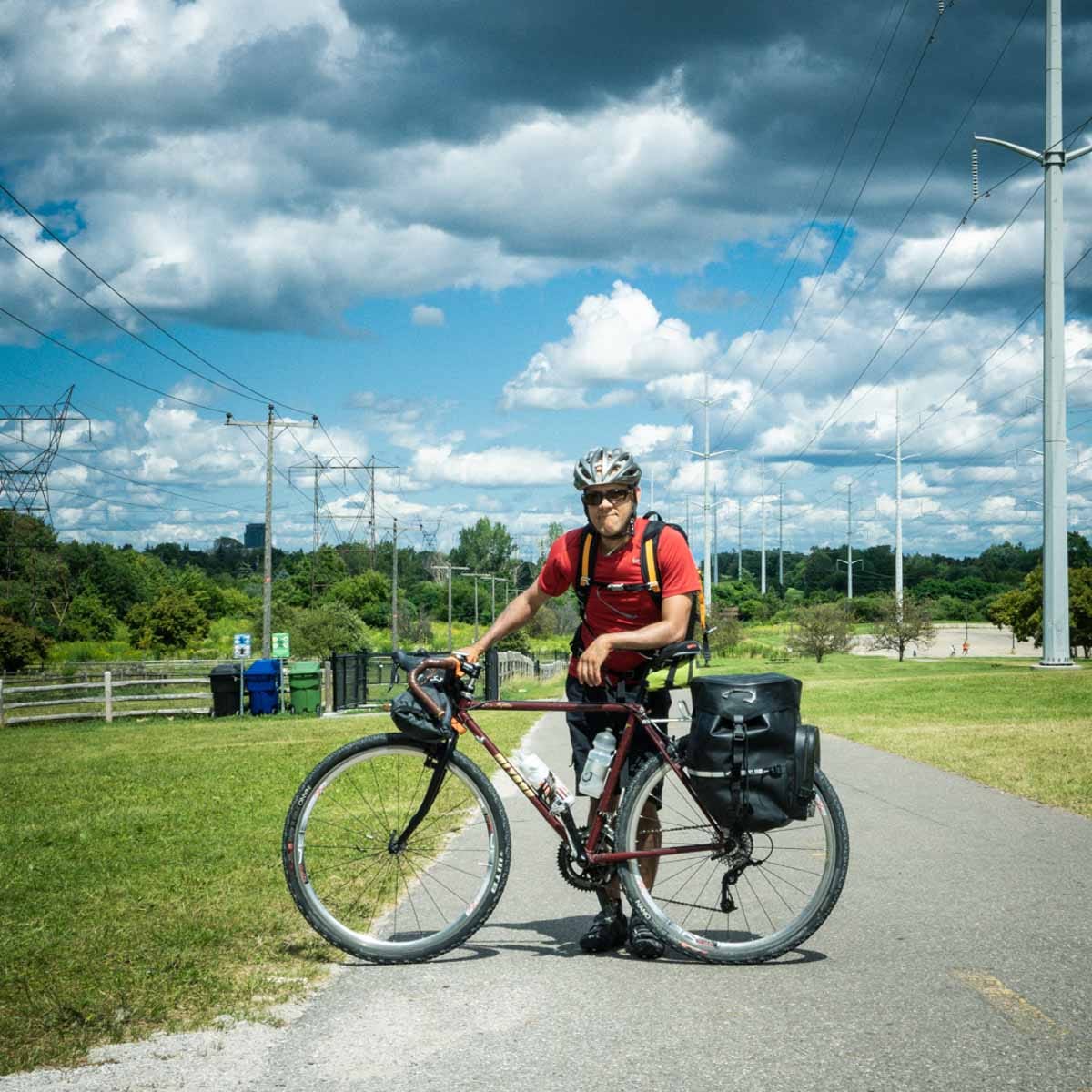

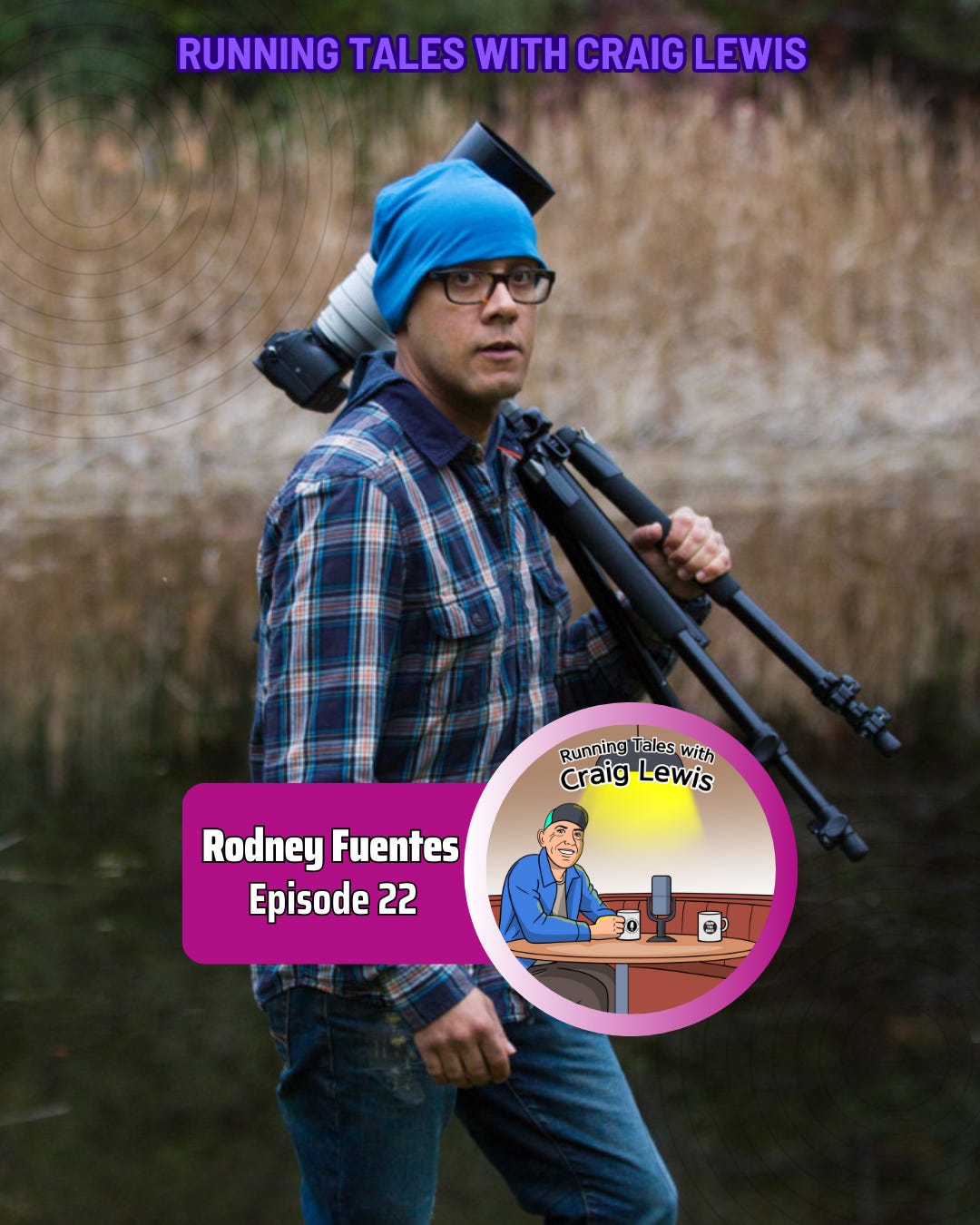

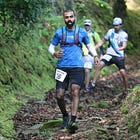

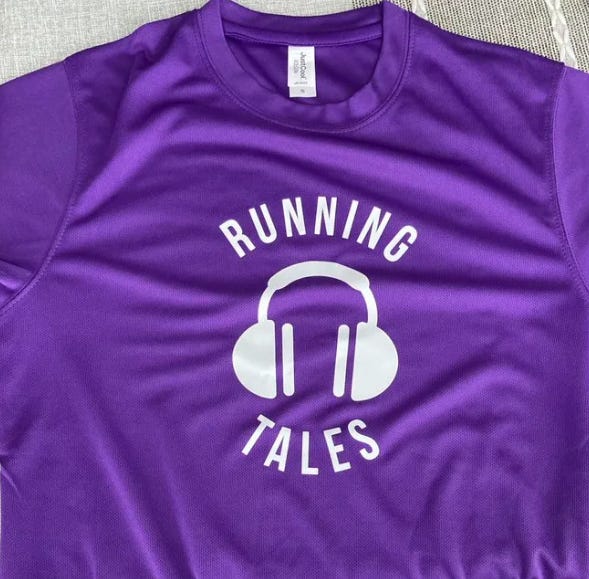
The story is fascinating and grabs your attention especially in the world that we are currently living in.
AI is everywhere but at what cost? Convenience is everywhere but at what cost?
Nothing is perfect but we all have to work together to get better at preserving the one thing that we all share.....the planet!